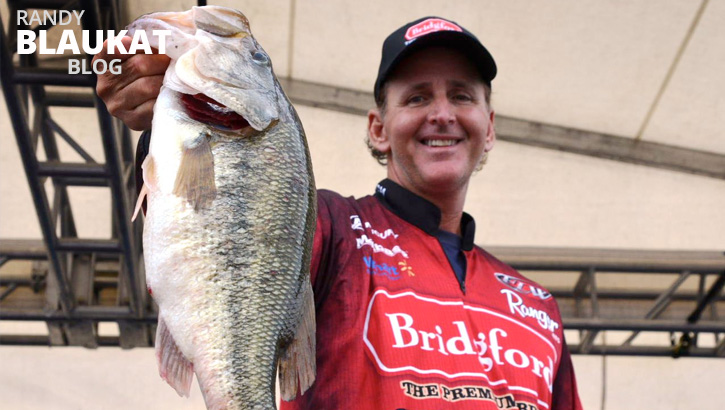Ledge season begins

The writer’s opinions and observations expressed here are his own, and do not necessarily reflect or represent the views, policies or positions of FLW.
This week is the beginning of what I call the initial leg of the FLW ledge-fishing expert benefit swing.
The Rayovac FLW Series event on Kentucky Lake, currently taking place, is the first in a trio of FLW events to be held on Tennessee River lakes, the latter two being the Walmart FLW Tour on Pickwick Lake and the Walmart FLW Tour grand finale on Kentucky lake. Each tournament promises to be a postspawn, offshore shootout, and like some other anglers, I’m not particularly thrilled with this part of the season, for a couple of reasons.
First, June is the time of year when the bass are recovering from the spawn and tend to be very weak. That is why we see the highest mortality rates at bass tournaments during this month, which is never a good thing. Also, despite the size of Kentucky Lake and Pickwick, at this time of year the lakes will fish seemingly tiny. Most of the field will be piled up on top of each other on key ledges, and with the side-imaging/down-imaging technology, the lakes fish even smaller.
Add to that the extreme local fishing pressure, a strong local field and other events on the lakes on top of the FLW tournaments, and you can see why so many FLW anglers are not exactly thrilled at what lies ahead. Regardless, as in any event, there will be bass to be caught and money to be won.
From what we saw on day one, the Rayovac FLW Series on Kentucky Lake will be dominated by ledge fishing in 8 to 25 feet of water (Editor’s note: Brandon Hunter took the early lead with more than 27 pounds, which he caught by fishing offshore ledges.). In the past, late May and early June have offered some good action by flipping, frogging or working a Rebel Pop-R across the top. I doesn’t appear that any of that is coming into play much.
Kentucky Lake fishes so much different now than it did 15 years or so ago. Back then, anglers had to put in the time to cover miles of ledges by actually fishing to find the schools. Only the locals knew the locations of creek intersections, isolated stumps and shell beds. It’s a different world now.
Few anglers actually fished during practice. Instead, they turned on dual imaging units and idled around for hours, looking for tiny specks of “rice” on the screen. Once the fish that these specks represent were found, many contestants didn’t even fish them until the event.
The challenge for all the anglers will be overcoming the effects of fishing pressure on these schools. Timing and boat draw are two factors almost as important as finding the fish in the first place.
The major downside of postspawn ledge fishing is the uncontrollable variable regarding who gets to the spot first, and what type of deals are worked out among the anglers sharing the sweet spots.
You might have noticed over the past couple of years that offshore experts such as Mark Rose, JT Kenney, Randy Haynes and others always seem to be fishing only a few feet apart from each other. These anglers who have become experts at reading electronics always tend to get on the same group of fish, but such is a byproduct of the technology.
Lakes like Kentucky, Pickwick, Okeechobee and a few others share a common distinction that has become fishing gospel: “If you are not around the boats, you are not catching many fish.”
Where these lakes are concerned, that’s a true statement for the most part, and another reason why these venues are not among the favorites of many Tour-level anglers.
Techniques and lures in the Rayovac event are secondary to electronics. Big swimbaits, football-head jigs, deep-diving crankbaits, jigging spoons and possibly umbrella rigs do most of the damage. The big key is finding the schools that hold the bigger fish, or finding some schools that have been somehow overlooked by the other anglers. That is what it will take to win.
Getting the big ones in the boat is another issue. June is notorious for being the month when an inordinate amount of big bass jump off the hook when fishing big crankbaits. It seems that during this time of year, few of the big ones will really fully eat a crankbait. They tend to nip at the back hooks, and many times the ones you land are only hooked with one barb. The big crankbaits will catch the biggest, most aggressive bass in these schools, but other lures will have to be employed to maximize the potential of the school.
My initial estimate for the Rayovac event was for the winning angler to have around 60 pounds for three days, and that it would take about 24 pounds over two days to win a check. We’ll see what happens on day two today, but it looks like my predictions will be pretty close.
Best of luck to all the anglers!
Editor’s note: Blaukat caught 17 pounds, 2 ounces on day one to start the event in 57th place. Click here for full results.